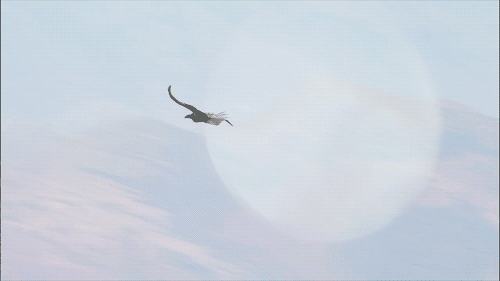Using GPS to help save the California condor from extinction
This week on TechKnow, Oldmixon travels to Bitter Creek Wildlife Refuge in Kern County, California to study how science and technology helped increase the population of the California condor. "The California condor was practically extinct when we started to use technology to bring them back and foster an increase in their population," explains TechKnow contributor Rachelle Oldmixon.

The California condor is the largest flying bird in North America, able to soar up to 55 miles per hour and travel 150 miles in a single day. They reside mainly in the dry desert regions of central and southern California, Utah, Arizona, and Baja California. However, in the late 1980s, the birds were all but extinct due to low reproduction rates, poaching and poisoning from DDT and lead bullet fragments. "Because humanity took them to the brink of extinction, we're now working to bring the California condor back to its original population levels," Oldmixon says.
"The thing that's most disheartening is the lead poisoning," says Mike Wallace, Condor Program Manager at the San Diego Zoo Institute for Conservation Research. "Because again, it's man-caused. We're putting them into extinction. So it's our responsibility to try and save them."
As a scavenger, the California condor gets most of its food by eating dead animals. Unfortunately, if condors eat animals that have been shot by hunters or ranchers, they face the possibility of ingesting fragments of lead bullets, which can lead to life-threatening lead poisoning.
At the nadir of the condor's existence in 1987, there were only 22 of the birds left. At that point, the government put a conservation plan into action that involved the capture of all 22 California condors so that the species could be fostered and bread at local zoos.
Fewer than 30 years later, conservation efforts have increased the California condor population from 22 to more than 400 birds, over half of which are back living in the wild.

When asked how his team increased the population so rapidly, Wallace gives a relatively simple answer: "We manipulated the breeding rate."
Condors typically lay only one egg at a time; however, they will produce another if something happens to the first, a biological reflex called "double-clutching." Scientists manipulate this reflex by carefully removing the condor eggs from their mothers' nests after they are laid, hatching and raising the baby birds in captivity with as little human interaction as possible. When the chicks are old enough, they are released into the wild.
Once they return to the wild, the condors' impressive flying ability necessitates the use of technology to track and maintain their numbers. Geoffrey Grisdale of the U.S. Fish and Wildlife Service leads a team that catches condors twice a year for medical checks and maintenance of their tracking devices.
"Lead poisoning is the highest form of mortality [for the condors]," explains Grisdale. His team has a portable field kit to test each bird's blood for traces of lead. If they are sick, they remain in captivity for medical treatment. The healthy ones are released back into the wild, but not before being outfitted with a solar-powered GPS unit and VHF transmitter so their location and activity can continue to be monitored by scientists.
One-third of the living condor population is currently equipped with GPS tracking devices. At the San Diego Zoo Institute for Conservation Research, scientists monitor 30 condors in Baja California. GPS transmitters allow the researchers to track and monitor the birds' behavior and flight patterns.
For example, Dr. James Sheppard found that the Baja California condors favored a specific area of the desert in the morning because the rising sun hits there first, creating the hot desert thermals the condors love for soaring.
"That something that we didn't see, that we didn't know about until we got the data from the GPS tags," Sheppard says. "That's a fantastic example of how technology is really driving the field of ecology now. Without this data, we would just have to stand on a cliff with a pair of binoculars and a clipboard and hope that we see a condor off in the distance."
With the technology to keep an eye on these condors and the resources to keep them healthy, scientists are optimistic that population numbers will continue to grow.
"There's been millions of dollars put into this program since the beginning," Grisdale says. "I would argue that it's worth it. You have to draw the line somewhere. We're not going to accept letting animals go extinct is okay."
Watch "TechKnow," Sundays at 7:30PM ET/4:30PM ET on Al Jazeera America.
Error
Sorry, your comment was not saved due to a technical problem. Please try again later or using a different browser.